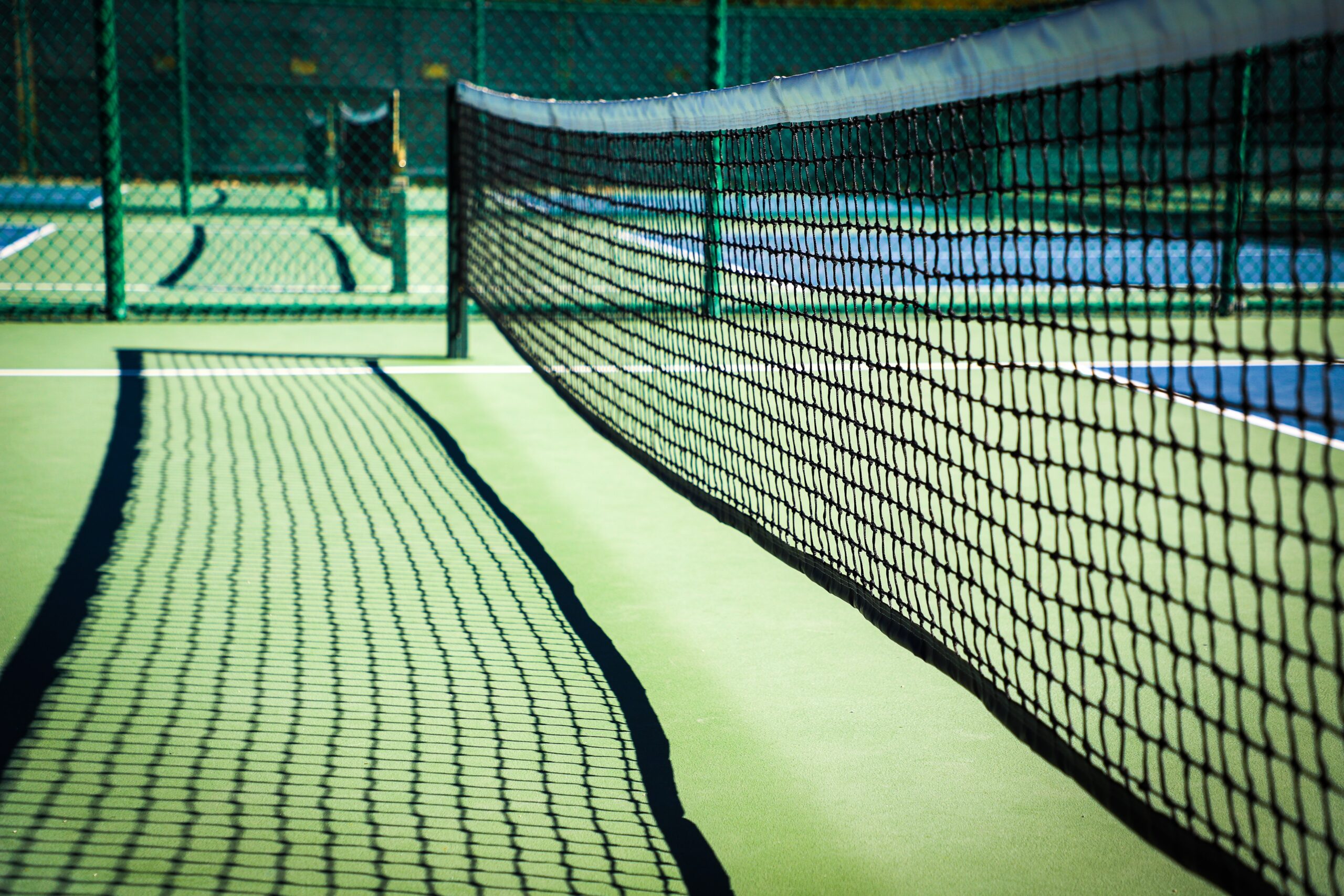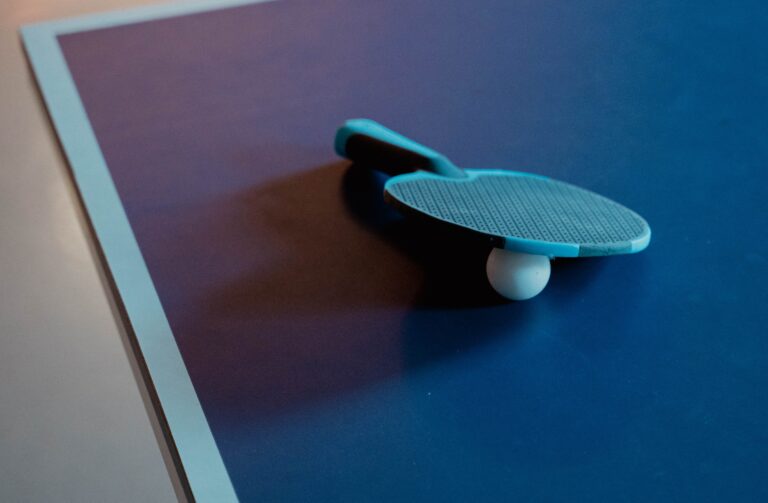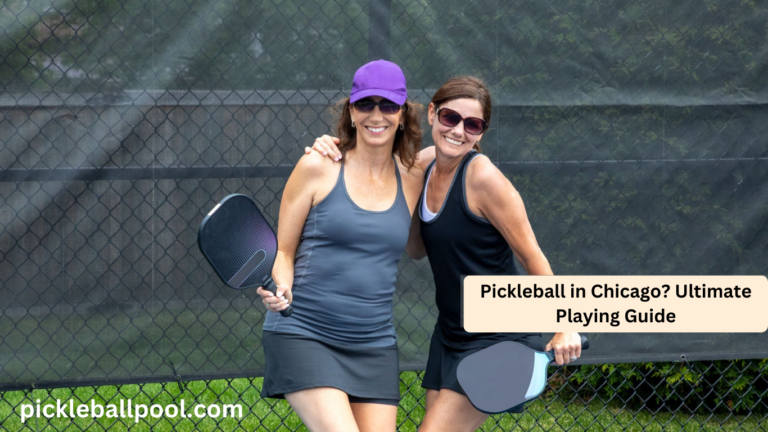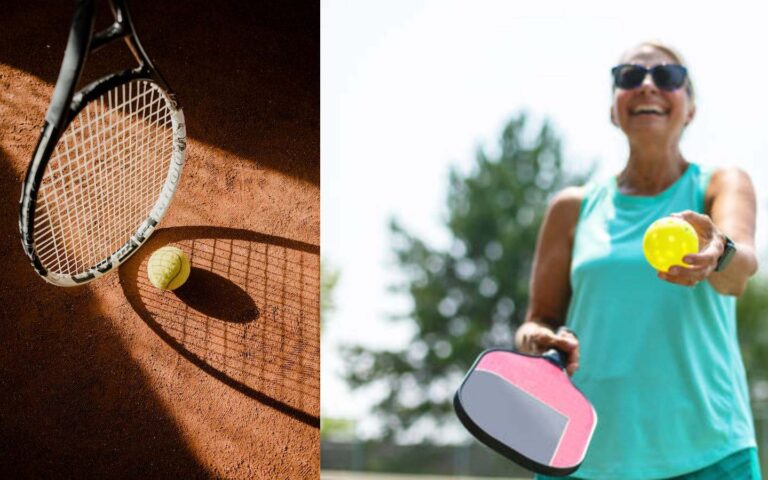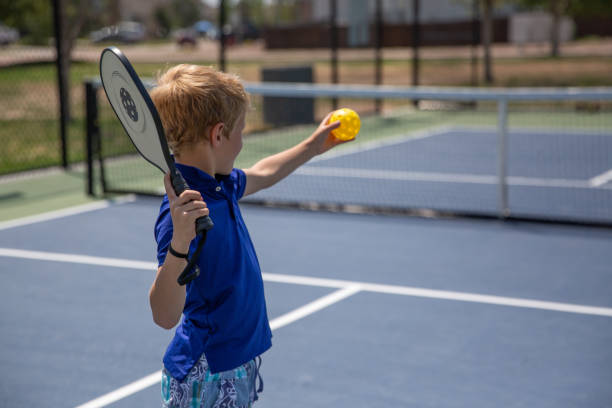The Complete Guide How to Build an Outdoor Pickleball Court: Start your Backyard Pickleball Court Now
Imagine the thrill of a competitive game of pickleball right in your own backyard, with the sky as your ceiling and nature as your spectator. Welcome to our guide to building your very own outdoor pickleball court!
This isn’t just about physical activity or nurturing a hobby; it’s also about creating an inviting space for community, fostering relationships, and making memories that will last a lifetime.
The satisfaction gained from constructing this recreational retreat yourself is simply unmatched. So grab a hardhat and prepare to dive into our comprehensive step-by-step guide to transforming your outdoor space into an exciting pickleball arena.
The rising popularity of pickleball
You’ve probably heard your parents or grandparents talk about pickleball—it’s one of the fastest-growing sports in the country! Pickleball is a fun mix between tennis, badminton, and ping pong. It uses a ball similar to a wiffle ball and paddle rackets like ping pong. Courts can be set up almost anywhere because they’re pretty small.
Pickleball is getting popular for some key reasons:
- It’s easy to learn, even if you’ve never played racket sports before. The rules are simple, and the court is small.
- You can play singles or doubles. Doubles is more social since you can chat with your partner.
- It’s low-impact, so it’s gentle on the knees and joints. This makes it safe for seniors too.
- Pickleball gear, like paddles and balls, is inexpensive compared to stuff for tennis or golf.
- It’s an official high school sport in some states now. Colleges are adding teams too.
- There are tournaments held across the country for exciting competition.
With pickleball’s growth, more public courts are popping up in parks and recreation centers. But having your own court at home would be even more fun!
Benefits of having your own pickleball court
How cool would it be to have your very own pickleball setup right in your backyard? Here are some of the awesome perks of having a home court:
- Play pickleball whenever you want! There is no need to wait for a court at the park or community center.
- Invite friends over for competitive games and tournaments. Great for birthday parties or cookouts too!
- Get to choose the court size and surface that work for your space. Customize it with your favourite colours.
- Practice skills every day to get really good at serving, returns, and dink shots.
- Make up your own silly pickleball games with siblings or parents. There is lots of room for creativity!
- Avoid worrying about sharing germs from public equipment and courts.
- Host inter-family competitions to see who dominates—maybe start a trophy tradition!
As you can see, having a home court would be really fun while also keeping you active outdoors. It’s something the whole family could enjoy together. And who knows? It may inspire you to be the next pickleball pro!
How to Build an Outdoor Pickleball Court
Are you considering constructing an outdoor pickleball court for your club, school, or recreational facility but are unsure about the starting point of setting up a pickleball court?
If you’ve previously constructed a tennis court, you’re already halfway there since the methods used to build pickleball courts closely resemble those of tennis.
This guide will provide an understanding of the fundamental steps to creating a pickleball court, whether you’re coaching for league play at a country club, senior living community, school team, or recreational center.
Things to Consider Before Building Court
Before starting construction, you need to thoroughly plan out your court. First, make sure you have adequate yard space to fit a regulation-sized or smaller court, and get approval from your parents for the cost. Choose a flat location that won’t flood, and call your city permit office to check if approval is needed.
Then decide on dimensions, allowing safety margins of 4-6 feet between boundaries and fences to avoid collisions. Give thought to the orientation in terms of sun glare before finalizing the layout.
Space Requirements: How big is your backyard? Make sure you have enough room to fit a full court or a smaller playground-sized court. Measure to find out. The standard court size is 20×44 feet for doubles play. Allow extra room along the sidelines or baselines.
Budget: Building a court costs money for concrete, tiles, a net, paddleballs, and more. Estimate costs and make sure your parents approve spending.
Location and Terrain: Orient north-south to avoid sun glare issues. Angle specific courts if necessary. Pick a yard spot that’s flat and doesn’t flood. Check if trees or slopes will get in the way.
Local Regulations: Your city may require permits to build in your yard. Have parents call the permit office to ask.
Designing Your Court
Official Court Dimensions: Standard sizes are 44 ft x 20 ft for doubles, but you can make yours any size. The net is set at 36 inches at the sidelines and 34 inches in the middle for both singles and doubles. The non-volley zone is 7 ft from the net on each side, commonly known as the “kitchen.”
Surface Type: Poured concrete and post-tension concrete are gold standards for durability. Cushioned acrylic or polymer coatings add comfort. Limit cracks with expansion joints. Permeable pavestones can aid drainage on wet sites.
For affordability, asphalt works but requires more maintenance. Common surfaces are concrete, blacktop, or snap-together tiles. Choose what fits your budget.
Safety Margins: Leave space around boundaries so players don’t run into fences. 4-6 feet between court lines and fences is good.
Orientation: Face the court away from low sun angles that would shine in players’ eyes.
Equip Your Court with Light: Equip your court with light to ensure optimal visibility for the playing area. Proper lighting is essential for evening or indoor pickleball. Installing high-quality light poles around the court will provide consistent and reliable illumination, allowing players to fully enjoy the game without any visibility issues.
You may like: 20 Best Pickleball Party ideas: Tips and Tricks Invitations and Decoration in 2024
Necessary Materials and Equipment to Build Pickleball Court
Now you need to prepare for the building phase by purchasing the necessary equipment. For the court itself, select quality surfacing such as weather-resistant athletic floor tiles, poured concrete, or asphalt.
You’ll also need white exterior paint for crisp boundary lines, a durable net with posts and hardware to suspend it at the proper 34” height, and optional fencing with a gate for safety. Don’t play at night without lighting!
You’ll need to get a few key things before you start building your court:
Court Surfacing: This is what you’ll put on the ground for the court floor. Common choices are concrete, blacktop, tiles, or sport court carpeting.
Paint: Special long-lasting exterior paint to mark boundary lines, kitchen or non-volley line lines, and the no-volley zone in a different colour.
Net System: Adjustable center-height mechanisms (36 in. sides, 34 in. middle) are ideal. Sturdy steel or aluminium poles that permanently anchor into the ground High-quality weather-resistant netting (typically polyethylene) Post sleeves allow removability if needed.
Optional Extras: Fencing around the court keeps balls contained and adds a cool look. String lights allow nighttime play.
Preparing the Site to build a pickleball court in your backyard
Clear and grade the area using shovels, rakes, and rollers until the surface is flat and evenly compacted. Excavate a few inches down, fill it with packed gravel for drainage, then tamp down again firmly. Remove any sticks, rocks, or vegetation in the space.
Get your yard ready before the floor goes in.
Grading: Use a shovel, rake, or small tractor to flatten the area out. Remove sticks, grass, and rocks.
Base: Dig down a few inches where the court will go and fill it with packed gravel for drainage.
Compacting: Roll over the surface firmly with a heavy roller to compress it, or stomp all over the space!
Building Your Court Pickleball Court: Installation & Construction
The exciting part now is building your court! Professionally install sport court tiles or pavement, adding colour coating if desired. Precisely lay out and paint non-slip lines for boundaries, kitchen, and no-volley zones using stencils.
Erect net posts durably concreted in and string high-tension net mesh across. Install fencing, lights, and accessories like benches or ball holders to complete it.
Now you get to build for real! Steps include:
- Lay down tiles, pour or pave concrete or blacktop
- Add colourful acrylic coating if wanted
- Paint non-slip boundary lines, kitchen lines, and no-volley zones.
- Set up net posts and attach the mesh net across center
- Put up fencing with a gate entrance (optional)
- Install string lights around perimeter (optional)
Finishing Touches
- Let concrete or paint cure fully before playing
- Make any fixes needed if the court surface is uneven
- Add fun stuff like benches, ball holders, and shade awnings
Maintaining Your Outdoor Pickleball Court
Allow substantial curing time for surfaces to properly harden before play. Frequently sweep debris, recoat faded lines annually, power wash periodically, and check net tautness to keep your court maintained.
To keep your outdoor pickleball court looking nice:
- Sweep away dirt and leaves
- Repaint any fading lines
- Check that the net is held taut but not too tight
- Power wash and apply new acrylic every few years
Enjoying Your New Court!
- Get paddles, balls and some friends
- Have round-robins, tourneys and picnics
- Join local pickleball clubs and teams
- Teach your family members how to play too!
you may like: 9 Best Pickleball Paddles Under $100 for Beginners to Pros
Pickleball Court Dimensions and Specifications
The pickleball court dimensions and specifications are standardized for official play. The court measures 20 feet wide and 44 feet long, with a non-volley zone extending 7 feet from the net on either side. The outdoor pickleball net is set at a height of 36 inches on the sidelines and 34 inches on the centerline.
The sidelines and baseline are marked with chalk, and there is a 10 feet no-volley zone on each side of the net. These measurements ensure fair play and consistency across all pickleball courts, which should also be 60 feet apart for proper spacing. Standard pickleball lines are 2 inches wide.
How much does a backyard pickleball court cost?
The cost of building a backyard pickleball court can vary depending on factors such as size, materials, and labour. According to USA Pickleball, a 30′ x 60′ court can cost anywhere from $10,000 to $20,000 to construct.
This estimate includes expenses for materials such as fencing, surfacing, and netting, as well as the cost of labour if hiring professionals for the installation. Additional costs for amenities such as lighting, seating, and storage can also contribute to the overall expense of building a backyard pickleball court.
How Long Does a Pickleball Court Surface Last?
The longevity of a pickleball court surface depends on several factors, including court construction, weather conditions, and regular maintenance. Generally, an outdoor court with a standard pickleball playing surface can last anywhere from 5 to 10 years before needing resurfacing.
Proper cleaning, sealing, and occasional repairs can help extend the lifespan of the court. Harsh sunlight, heavy rain, and frequent use can wear down the surface over time, so it’s important to invest in quality materials and conduct regular upkeep to ensure a longer-lasting court.
Conclusion
In summary, pickleball is a fun sport for all ages. Having your own outdoor pickleball court at home allows you to practice, play with friends, and have family competitions. Building a backyard court may take some effort, but it can bring back years of good times and memories. We’ve covered all the steps for planning and building a court, so now it’s time to make it happen!
Having a pickleball setup at home would be great, so go for it! Hopefully, this has inspired you to consider creating your own court. Discuss the details and costs with your parents to make your ideas a reality.
FAQs
1. What are the basic requirements for building a pickleball court?
The basic requirements for building a pickleball court include a flat playing surface, a net, court lines, and a clear playing area with specific court dimensions.
2. Can I convert an existing tennis court into a pickleball court?
Yes, you can convert an existing tennis court into a pickleball court by adjusting the court dimensions and adding lines for pickleball. This can be a budget-friendly approach if you already have access to a tennis court.
3. What is the recommended surface for a cost-effective pickleball court?
A cost-effective court surface for a pickleball court can be asphalt or a concrete surface that can be repurposed and marked for pickleball play.
4. How can I set up a budget-friendly pickleball court in my backyard?
To set up a budget-friendly backyard pickleball court, you can use existing outdoor court space and install a temporary net system that can be easily set up and taken down as needed.
5. What are the key cost-saving elements when building an outdoor pickleball court?
Key cost-saving elements for building an outdoor pickleball court include using existing infrastructure, such as a fence for boundary and portable net system for the non-volley zone.
6. Are there any DIY methods to mark the court lines without additional expenses?
Yes, you can use chalk or sidewalk chalk to mark the court lines for temporary play, especially if you’re setting up a pickleball court in
7. Can I turn my driveway into a pickleball court?
Yes, you can turn your driveway into a pickleball court! Pickleball can be played on any hard, flat surface, so your driveway is a perfect spot to set up a temporary or permanent court. Just make sure you have enough space and proper lines marked out for the court dimensions. Enjoy playing!

